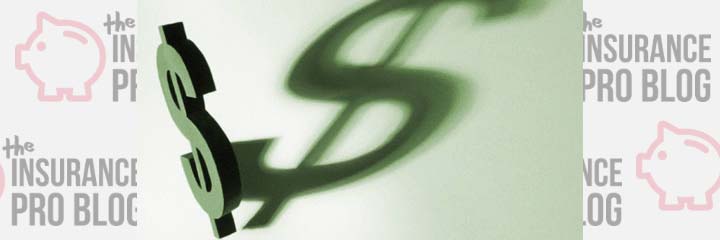We’ve talked a lot about using life insurance as an income producing asset. Many people stumble a bit when they first attempt to wrap their head around the notion of using “insurance” either as a place to save money or as an asset from which they can generate income.
I raised an eyebrow or two when first presented with the idea. Today’s discussion is not an introduction to the concept of using life insurance as an income source, but rather a somewhat advanced look at why it can work so well.
A Quick Primer on Leverage
Leverage in finance terms (simply borrowing money) can be a powerful strategy. One such powerful option it brings to the table is the ability to pledge assets as collateral to essentially use the value the assets represent without needing to sell the asset. Home equity is probably the most common type of leverage that most of us encounter.
When you borrow money against real estate, you access value (through a loan) the equity represents without having to sell the asset.
There’s a subtle, but important notion to this which is simply the fact that because you still own the asset (the real-estate) you still benefit from the appreciation in the asset (assuming it increases in value).
Suppose for a minute you owned a home and land valued at $500,000 and had a need for $400,000. You could sell the house. But you’d be mighty displeased to learn that two years later the house now had a value of $650,000.
Alternatively, you could pledge the house as collateral for a loan, and if you did this you’d still own the home two years down the road when it increase in value to $650,000. At this time, if you had a need for another $100,000, you could pledge additional equity in the house.
What if instead of needing so much cash up front, you instead had continuous access to the equity through a line of credit, or through subsequent loan applications, and instead accessed equity for spending money when needed?
Again assuming the increase in value mentioned already, you’d net way more value from holding this property than having sold it (even if you could have somehow sell only a part of it and been able to realize a partial gain from the increase in total value).
Risks of Leverage
Leverage is not without risks. And in a scenario where the loan involved pledging an asset as collateral, a gargantuan amount of risk could exist. Especially if the underlying asset is volatile in terms of pricing.
Reductions in asset value could bring about a margin call or a loan-to-value ratio that greatly diminishes future access to capital.
With most traditional lending products, leverage also requires the ability to regularly and systematically make payments.
But what if we could reduce or seriously minimize these risks?
Unleashing the Power of Low Risk Leverage with Life Insurance
Life insurance can make supreme use of leverage in an extremely unique and beneficial fashion.
Policy loans do not remove cash in a policy, meaning it will continue to grow in value (just as we’d hoped would be the case in my real-estate example above).
But in addition, many life insurance contracts have guarantees that ensure current cash values continue to appreciate every year. Even more, the life insurance contracts I’m talking about in this instance have a long and very well regarded track record for appreciating in value well beyond the guarantee appreciation rate stipulated by contract.
But that’s not all it does.
Life insurance policy loans afford extremely high loan-to-value ratios, do not require credit worthiness, can be processed and completed in a matter of days, follow no specific servicing (read: repayment) schedule, and do not amortize loan interest.
That’s a lot of words that sound like something cool is going on, but what exactly does it all mean?
Net benefit is the ability to generate a higher percentage of income to total asset value (i.e. the cash value in the life insurance contract) than one would typically use with other assets.
Case-in-point there’s a lot of hand wringing going on at the moment in the financial services industry over what an appropriate percentage of assets one should use as a starting point for income generation with stocks and bonds. For years we used 4%, but that has come under serious scrutiny.
The problem found when trying to land on a safe withdrawal rate stems mostly from sequence of returns risk and the fact that one usually has to sell parts of the assets they own in order to reap the value they represent as spending cash.
Life insurance removes this risk not only because it’s super stable year-over-year, but also because one need not “sell” anything. Instead a policyholder can continue to benefit from the underlying asset (i.e. the cash value) and its year-over-year appreciation.
The “withdrawal” of money is instead a running loan balance matched against what has consistently been (and in some cases guaranteed to be) an ever increasing asset.
More Money with Less Saved or Less need to Save
I talked a lot last week about the fact that I could generate the same projected income stream with life insurance with a lower savings rate vs. an 8% per year hypothetical investment account despite the life insurance policy’s far lower anticipated returns.
That article is the quickest an easiest way to manifest the main point of this article. Remove sequence of returns risk (which can have a major impact I assure you) and the availability of leverage in terms of pledged collateral can produce substantial benefits in terms of total return.
The fact that you can get more out of the money you save means those with less saving capacity than can benefit from what life insurance has to offer.

